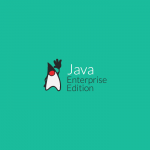EJB is a Component Based Model
- With EJB, you can develop “Reusable Chunks” – EJB Components; that developers from unrelated company can assemble it to construct their own application.
- All application methods are placed into separate components so that all of the data and functions inside each component are related.
- Components communicate with each other via interfaces. This interface can be seen as a signature of the component – the client does not need to know the internal implementation of the component in order to make use of it.
- Combination of application servers and software components is usually called distributed computing.
Online Training Application:
John develops an online training application using three components (Register, Support and ValidateCreditCart) bought from iByteCode and develops three other components at his company.
Benefits of Component Based Model
- With Component Based Model, we can make use of code reusability and customize these components without touching the Java code. Application developer can buy bean (component) and assemble it to develop their own application.
- Credit card component can be assembled in applications such as, Online Shopping, Airlines Reservation, Online Training, Online Bill Payment, etc.
- Components are substitutable; one component can replace another, if the successor component meets the requirements of the initial component without breaking the system in which the component operates.
- Components can also be replaced with an updated version without modifying the system.
NOTE:
The word Component and Bean mean the same.
Distributed Computing Architecture
Using the combination of application servers and software components is usually called distributed computing. The common real-world application of this is financial applications or ticket reservation.



